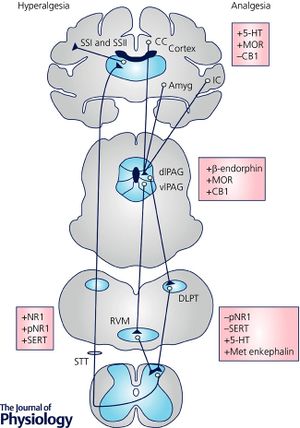Exercise Induced Hypoalgesia
Exercise is an important component of effective chronic pain management and has a number of potential benefits. Long term exercise training has been shown to relieve pain, across many chronic pain conditions. However, the response is often variable and exercise induced flares in pain are common. Exercise typically leads to an acute reduction in pain and pain sensitivity for up to 30 minutes afterwards. This is called exercise induced hypoalgesia (EIH). Typically we see reduced pain sensitivity both close to the exercising muscle (local EIH), and remote sites, away from the exercising muscle (global/remote). Local EIH is greater than Global/Remote EIH.
Dose Response
In pain free adults, the dose response for aerobic Exercise is moderate to high intensity, achieving 65-70% or more of max heart rate. Longer durations better. With resistance Exercise, both isometric and dynamic (isotonic) exercise can achieve an effect. High intensity resistance exercise should be 60-100% 1RM. Low intensity should be 10-30% 1RM with a sufficiency duration of contraction (> 3 mins or to failure).
EIH is variable in those with chronic pain. Rice et al reviewed the evidence and found EIH was generally significantly impaired in chronic pain populations on at least one measure in most studies. The populations were EIH was impaired was in chronic widespread pain, fibromyalgia, whiplash, localised myalgia, chronic neck pain, osteoarthritis, diabetic neuropathy. Normal EIH was achieved in some studies in rheumatoid arthritis, chronic back pain, and osteoarthritis.
Impaired EIH is associated with exercise induced flares during and after exercise, and reduced pain relief with long term exercise training.
Mechanisms

+, increase; −, decrease; 5‐HT, serotonin; CB1, cannabinoid receptor 1; DH, dorsal horn; MOR, μ‐opioid receptor; PAG, periaqueductal grey; p‐NR1, phosphorylated NR1; RVM, rostral ventromedial medulla.[1]
Both opioid and non-opioid mechanisms are likely to be involved.
Endocannabinoids are released after both aerobic and resistance exercise. In animal studies, blocking CB1 and (?CB2) receptor reduces EIH. In humans, there are decreased endocannabinoids in muscle associated with impaired EIH in chronic widespread pain and localised shoulder myalgia.
In animal research, the serotonin system may be involved in EIH. In human research, it has been found that EIH is partly heritable. There are genetically inferred strong opioid tone (ORPM1 genotype) and weak serotonergic signalling (5HT1a and 5 HTT genotypes) associated with increased EIH. There is no difference in pain free controls vs fibromyalgia.
There is a complex immune response to exercise. There is an initial pro-inflammatory effect, followed by anti-inflammatory rebound. Some evidence that pro-inflammatory response is increased with exercise in chronic pain and is related to EIH. Almost all the evidence for this is in people with chronic fatigue syndrome and chronic widespread pain.
Psychosocial Factors
In chronic pain, EIH is not associated with pain catastrophising, kinesiophobia, depression, or anxiety. However in pain free controls, EIH is associated with pain catastrophising, fear of pain, mood disturbance, and family environment.
Clinical Application
- Education
Be aware that not everyone will respond in the same way. Some people will not experience pain relief with exercise. Even if exercise does not change pain, it may still have many other benefits. In pain free controls, pre exercise education can powerfully modify the EIH response, in both directions. Could altering negative beliefs and enhancing expectation modify EIH? It may be better to choose type(s) of exercise the patient believes will be effective.
- Self-selected lower intensity
Some studies suggest that exercising at self selected (lower) intensities may help to induce normal EIH. However, the findings are largely equivocal, and other studies show no improvement in EIH with lower intensity and exertion. With long term exercise programmes, graded exercise produces similar results to other approaches.
- Exercising a non-painful area
In people with localised pain conditions, there is evidence that exercising outside the painful area can still produce EIH. For example doing lower limb resistance exercises with localised shoulder pain.
Resources
- Rice et al review paper 2019[2]
References
- ↑ Lima et al.. Does exercise increase or decrease pain? Central mechanisms underlying these two phenomena. The Journal of physiology 2017. 595:4141-4150. PMID: 28369946. DOI. Full Text.
- ↑ Rice et al.. Exercise-Induced Hypoalgesia in Pain-Free and Chronic Pain Populations: State of the Art and Future Directions. The journal of pain 2019. 20:1249-1266. PMID: 30904519. DOI.
Literature Review
- Reviews from the last 7 years: review articles, free review articles, systematic reviews, meta-analyses, NCBI Bookshelf
- Articles from all years: PubMed search, Google Scholar search.
- TRIP Database: clinical publications about evidence-based medicine.
- Other Wikis: Radiopaedia, Wikipedia Search, Wikipedia I Feel Lucky, Orthobullets,


